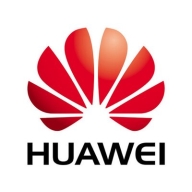

Splunk Observability Cloud and Huawei eSight compete in the field of IT infrastructure and network management. Splunk seems to have the upper hand due to its comprehensive data integration and monitoring capabilities.
Features: Splunk Observability Cloud provides extensive data integration, fast log searching, and customizable dashboards. It offers advanced monitoring and reporting capabilities for real-time insights into application performance and infrastructure security. Huawei eSight is focused on network device management, primarily for Huawei equipment. Its key features include alarm management, network monitoring, and a user-friendly interface for simplified device control.
Room for Improvement: Splunk Observability Cloud could enhance scalability, reduce costs, and aim for a more user-friendly interface. Huawei eSight needs improved reporting, better integration with non-Huawei devices, and increased automation features. Both solutions can improve in third-party integrations and customization, with eSight needing better device compatibility.
Ease of Deployment and Customer Service: Splunk offers on-premises, cloud, and hybrid deployment options with comprehensive support, though there are reports of slow response times. Huawei eSight focuses on on-premises deployment with users often relying on internal expertise due to potential support limitations.
Pricing and ROI: Splunk Observability Cloud is a premium product contributing to a strong ROI but is often noted for its high cost compared to alternatives. Huawei eSight is competitively priced, offering good ROI for Huawei-centric environments but lacking Splunk's extensive features which limits broader application.


Huawei's eSight is a unified software suite for planning, operating, and maintaining complex enterprise ICT infrastructure from global, converged networks and data centers to multimedia and video communications that includes the facilities necessary for delivering performance and IT services. eSight provides a platform that supports infrastructure and devices from third-party providers, to develop custom management applications and improves O&M efficiency.
Splunk Observability Cloud combines log search, data integration, and dashboards for seamless monitoring, enhancing infrastructure visibility and security. Its cloud integration and scalability support diverse environments, improving operational efficiency.
Splunk Observability Cloud offers comprehensive monitoring tools with user-friendly interfaces, enabling end-to-end infrastructure visibility. Its real-time alerting and predictive capabilities enhance security monitoring, while centralized dashboards provide cross-platform visibility. Users benefit from fast data integration and extensive insights into application performance. Despite its advantages, improvements could be made in integration with other tools, data reliability, scalability, and cost management. Users face challenges in configuration complexity and require better automation and endpoint protection features. Enhancing AI integration, alerts, and adaptation for high-throughput services could further improve usability.
What are the key features of Splunk Observability Cloud?In industries like finance and healthcare, Splunk Observability Cloud is implemented for application performance monitoring and infrastructure metrics. Its ability to track incidents and analyze machine data benefits network infrastructure, while distributed tracing and log analysis aid in tackling security threats. Organizations often integrate it for compliance and auditing purposes, enhancing visibility into network traffic and optimizing performance.
We monitor all IT Infrastructure Monitoring reviews to prevent fraudulent reviews and keep review quality high. We do not post reviews by company employees or direct competitors. We validate each review for authenticity via cross-reference with LinkedIn, and personal follow-up with the reviewer when necessary.